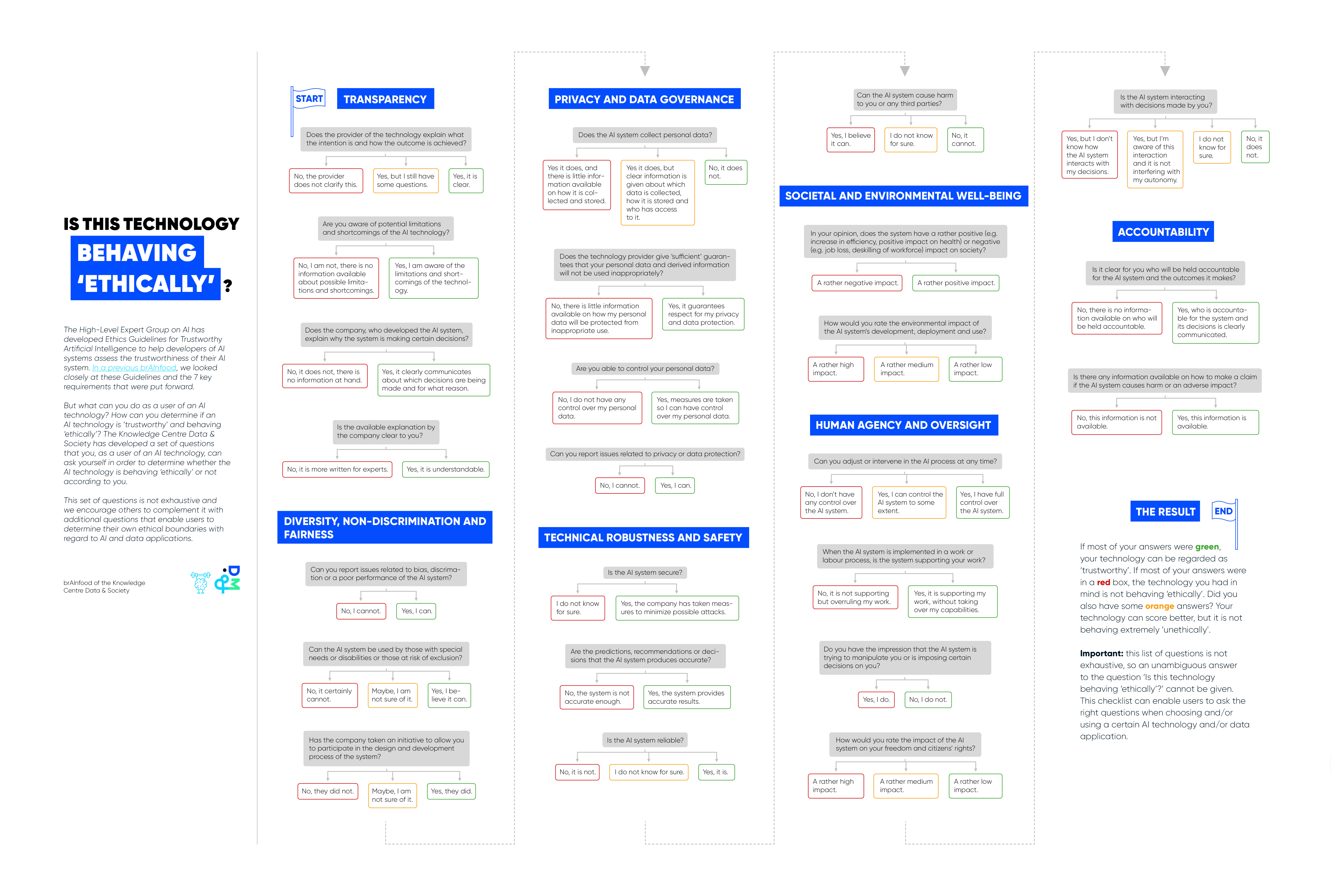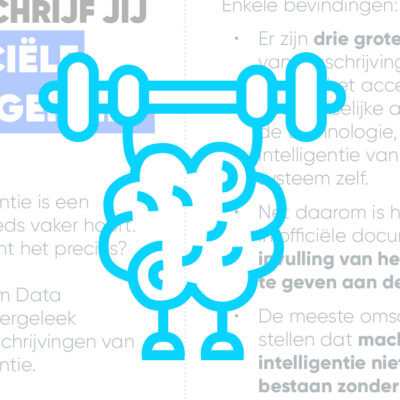brAInfood: Is my technology behaving 'ethically'?
Date of publication: September 2020 / Checked if updates were needed: March 2024
WHAT IS THIS BRAINFOOD ABOUT?
In this brAInfood we return to the Ethics Guidelines for Trustworthy Artificial Intelligence. These guidelines were developed by the High-Level Expert Group on AI (AI HLEG), appointed by the European Commission to support the implementation of the European strategy on Artificial Intelligence. Do you want more information on these guidelines? We discussed them earlier in brAInfood 3.
The report published by the HLEG includes seven key recommendations for the development of AI systems and a corresponding checklist of questions that individuals or companies can use when designing new AI technology.
The Knowledge Centre Data & Society has now created a new questionnaire, specifically aimed at end users of AI technology. On the basis of this checklist, end users can estimate for themselves to what extent the technology is behaving ‘ethically’.
WHY SHOULD I READ THIS?
AI is playing an increasingly prominent role in our daily lives. Therefore, it is important that not only designers but also users of AI technology can determine for themselves whether the system they use is ethical according to their standards. The questionnaire in this article should serve as a helpful tool in that process.
WHAT CAN I FIND OUT WHEN READING THIS?
This brAInfood from the Knowledge Centre Data & Society includes:
- An overview of the seven clusters used by the HLEG to issue ethical guidelines,
- A questionnaire that allows you to determine the extent to which AI technology behaves 'ethically' from a user's perspective,
- An invitation to formulate questions of your own which may supplement this list.

DOWNLOADS
With brAInfood, the Knowledge Centre Data & Society wants to provide easily accessible information about artificial intelligence. brAInfood is available under a CC BY 4.0 license, which means that you can reuse and remix this material, provided that you credit us as the source.
